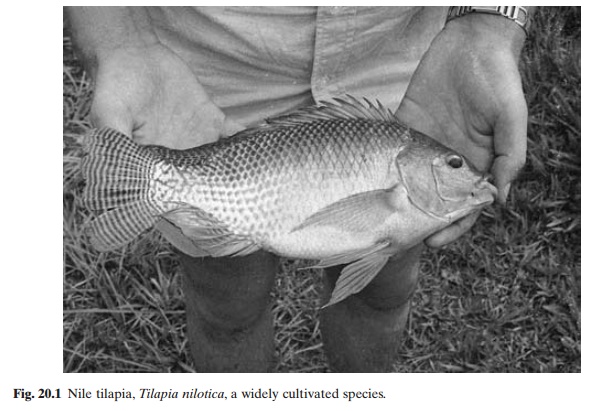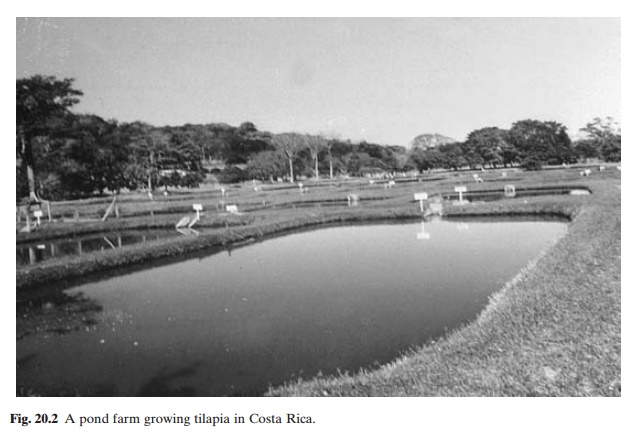Chapter: Aquaculture Principles and Practices: Tilapias
Tilapias (family Cichlidae)
Tilapias
Tilapias (family Cichlidae) are natives of Africa. They have been
introduced into a large number of tropical and sub-tropical countries around
the world since the 1960s, either accidentally or deliberately. Aquaculturally
this group of species has had a rather chequered history. Tropical
aquaculturists who experienced considerable problems in controlled spawning of
fishes were initially excited by the availability of a species that could breed
in almost any type of water body. Being herbivorous or omnivorous, it was
comparatively easy to feed the species of this group. They were found to be
hardy and could be reared in fresh, brackish and even sea water. Even though
the darkish coloration of the fish was not very attractive to some, large fish
were well relished when presented under different names such as ‘lake fish’ or
‘bream’.
Because of these favourable characteristics, tilapias were considered
ideal species for rural fish farming. In early efforts to develop fish culture
at a subsistence level in Africa, oriented to improving the nutrition of rural
populations, tilapias were the natural choice, especially in the Belgian Congo
(now Zaire). But some of the perceived advantages proved to be real constraints
to profitable fish farming, particularly the prolific breeding, which resulted
in overpopulation of small stagnant ponds. Ex-perience in Asia in the early
days of tilapia farming, after the accidental introduction of Tilapia mossambica in Indonesia,
createdopposing reactions in countries of that region. While governments of
some countries such as Thailand gave active support to stocking everywater body
with this species, others, like India, tried to restrict its culture to prevent
possible escape of the species into the major river systems.

Despite some of the advantages of tilapia as candidate species for
small- or large-scale culture, it was soon realized that the culture technique
for producing marketable fish was not as easy as originally believed. Their
early maturation and frequent breeding, especially in tropical climates,
affected growth rates to such an extent that special measures of stock
management and feeding were found necessary to produce fish suitable for human
consumption. Even in areas where small fish were acceptable as table fish,
stunted tilapia could be used only as livestock feed.There were very few
profitable tilapia farms at that time, and naturally interest in tilapia
culture dwindled for some time.

In recent years, the status of tilapia as a culture species has risen
again, as a result of efforts by enterprising farmers and aquaculture
technicians. Acceptability of tilapias as high-quality fish is spreading. The
Nile tilapia (T.nilotica) is grown to
a large size (680 g), thenstarved for three days in clean water, filleted and
individually quick-frozen to produce a quality product (Avault Jr., 1996).
Enthusiasm for the species has become so high that some have begun to describe
tilapia as the future ‘aquatic chicken’. Irrespective of whether this is an
exaggeration or not, it is clear that workable technologies are now available
for raising some of the species or hybrids of tilapia on a profitable basis,
even though many problems still remain to be solved (Guerrero, 1994).
Related Topics